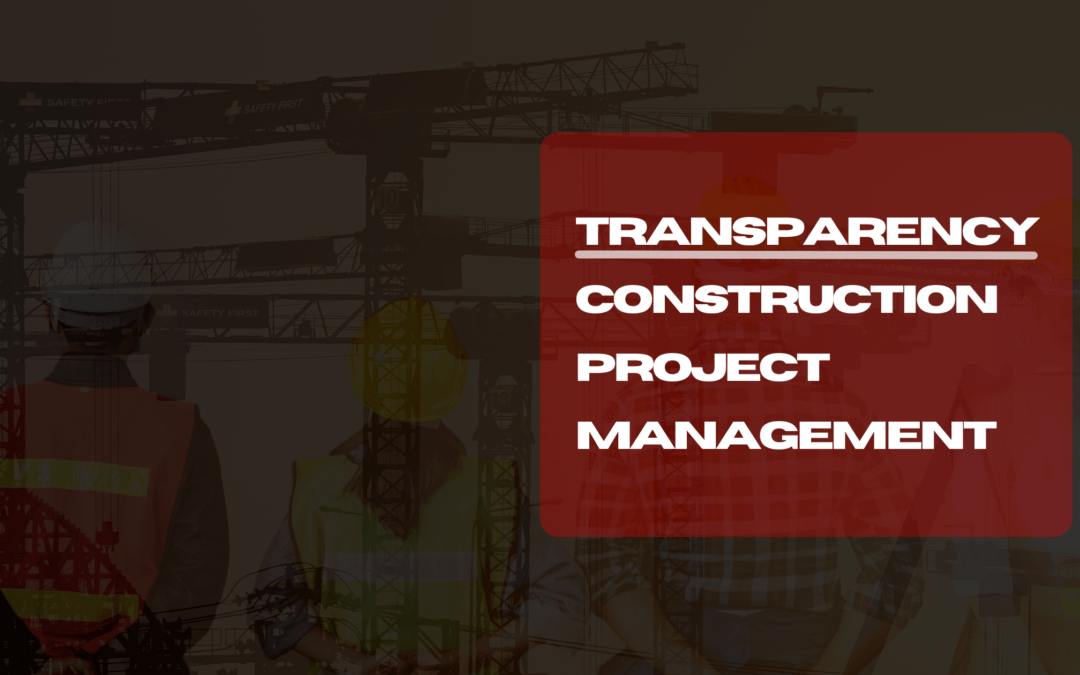Increasing Transparency in Construction Project Management: A Blueprint for Success
As the construction industry continues to evolve, the challenges associated with delivering capital projects on time and within budget have become more complex than ever before. This article delves into the crux of these challenges, shedding light on the paramount importance of transparency in the execution of construction projects. If you’re a construction project management aspirant or a seasoned professional, this comprehensive guide offers invaluable insights into the strategies that can elevate your project management prowess.
Table of Contents
Understanding the Transparency Imperative
The cornerstone of effective construction project management lies in transparency. The ability to have a clear and unobstructed view of project performance, resource allocation, and progress is not just a desirable attribute; it’s an absolute necessity. The lack of transparency often arises from a myriad of reporting issues, including segmented data, non-standardized reporting forms, and, perhaps most concerning, inaccuracies in project information.
The Reporting Quagmire
One of the major roadblocks to transparency is the presence of siloed data. In construction projects, data is generated from various sources, departments, and teams. Unfortunately, these data sources often operate independently, leading to fragmented insights. This fragmented data landscape hampers the ability to gauge project health accurately and make informed decisions.
Another challenge arises from the absence of standardized reporting forms. When project stakeholders adopt different reporting formats, it creates confusion and delays in data analysis. This lack of consistency not only slows down the decision-making process but also makes it difficult to compare and evaluate different projects effectively.
Moreover, the presence of inaccurate information within project reports can severely skew decision-making. Inaccuracies could stem from manual data entry errors, miscommunications, or even intentional misreporting. Such inaccuracies can lead to misguided resource allocation, unrealistic timelines, and ultimately, project failure.
The Three Pillars of Transformation
To tackle the transparency conundrum head-on, construction organizations must channel their efforts into three distinct areas. These pillars, when combined, form a robust foundation for elevating project management practices and enabling data-driven decision-making.
1. Leveraging Technological Solutions
In the digital age, technology is the ultimate game-changer. Organizations need to embrace innovative technical solutions that facilitate the seamless capture and analysis of project data. Cutting-edge tools and software platforms can centralize data from various sources, offering real-time insights into project performance.
Imagine a scenario where data from site progress reports, cost estimations, and resource allocation are harmoniously integrated into a single dashboard. This not only enhances data accuracy but also empowers project managers to identify trends, anticipate bottlenecks, and make proactive decisions.
2. Fortifying Project Performance Management Processes
Technology alone isn’t sufficient to drive transparency; it must be complemented by streamlined project performance management processes. By establishing clear guidelines for data collection, reporting, and analysis, organizations can eliminate the chaos caused by non-standardized reporting forms.
Integrating project management methodologies, such as Agile or Lean, can provide a structured framework for managing projects effectively. Additionally, fostering an environment of open communication and collaboration among cross-functional teams can ensure that project updates and insights are shared in a timely and coherent manner.
3. Empowering Stakeholders for Success
The third pillar involves a strategic focus on enhancing the capabilities, mindsets, and behaviors of project stakeholders. Professional development programs, workshops, and training sessions can equip team members with the necessary skills to navigate the data-driven landscape of modern construction project management.
In this context, fostering a data-driven mindset becomes pivotal. Encouraging stakeholders to base their decisions on concrete insights rather than gut feelings can transform the trajectory of a project. Furthermore, promoting a culture of accountability ensures that stakeholders take ownership of their roles in ensuring transparency and project success.
A Holistic Transformation for Project Excellence
In the interconnected world of construction project management, the three pillars—technological solutions, fortified processes, and empowered stakeholders—operate in synergy to bring about a holistic transformation. Transparent project execution isn’t just a goal; it’s a strategic imperative that can reshape the industry’s landscape.
The benefits of transparency extend far beyond on-time project delivery and staying within budget constraints. It enables construction professionals to detect deviations from the plan early on, allocate resources judiciously, and mitigate risks proactively. The ability to make informed decisions based on accurate data translates into a competitive advantage in an industry where efficiency and precision are paramount.
Conclusion
As construction project management transcends into the digital age, the need for transparency stands as an unwavering pillar of success. The challenges posed by fragmented data, reporting discrepancies, and a lack of standardized practices can be surmounted through a purposeful amalgamation of technological advancements, process enhancements, and stakeholder empowerment.
To delve deeper into this transformative approach to construction project management, refer to the original article by McKinsey titled “Increasing Transparency in Megaproject Execution”. This illuminating piece offers a deep dive into the strategies and insights that can propel you towards construction project management excellence.
In a world where construction projects are becoming increasingly intricate, transparency isn’t just an aspiration—it’s the bedrock upon which construction success is built.

